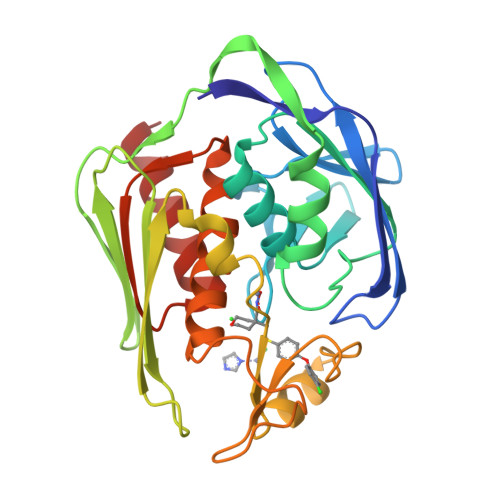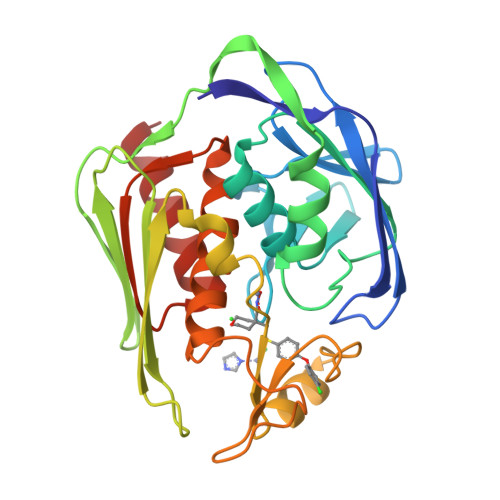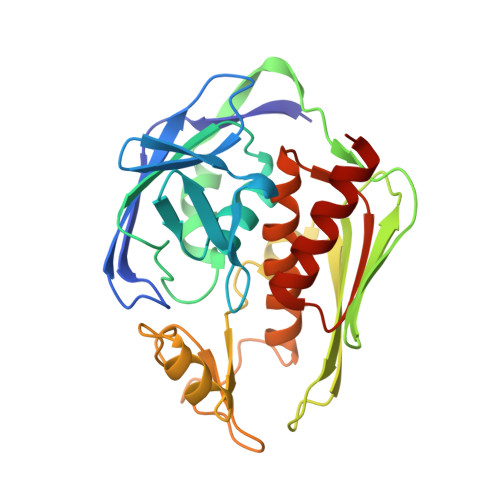Synthesis, Structure, and SAR of Tetrahydropyran-Based LpxC Inhibitors.
Murphy-Benenato, K.E., Olivier, N., Choy, A., Ross, P.L., Miller, M.D., Thresher, J., Gao, N., Hale, M.R.(2014) ACS Med Chem Lett 5: 1213-1218
- PubMed: 25408833
- DOI: https://doi.org/10.1021/ml500210x
- Primary Citation of Related Structures:
4U3B, 4U3D - PubMed Abstract:
In the search for novel Gram-negative agents, we performed a comprehensive search of the AstraZeneca collection and identified a tetrahydropyran-based matrix metalloprotease (MMP) inhibitor that demonstrated nanomolar inhibition of UDP-3-O-(acyl)-N-acetylglucosamine deacetylase (LpxC). Crystallographic studies in Aquifex aeolicus LpxC indicated the tetrahydropyran engaged in the same hydrogen bonds and van der Waals interactions as other known inhibitors. Systematic optimization of three locales on the scaffold provided compounds with improved Gram-negative activity. However, the optimization of LpxC activity was not accompanied by reduced inhibition of MMPs. Comparison of the crystal structure of the native product, UDP-3-O-(acyl)-glucosamine, in Aquifex aeolicus to the structure of a tetrahydropyran-based inhibitor indicates pathways for future optimization.
Organizational Affiliation:
Department of Chemistry, Infection Innovative Medicines, and Discovery Sciences, AstraZeneca R&D, Boston , 35 Gatehouse Drive, Waltham, Massachusetts 02451, United States.




















